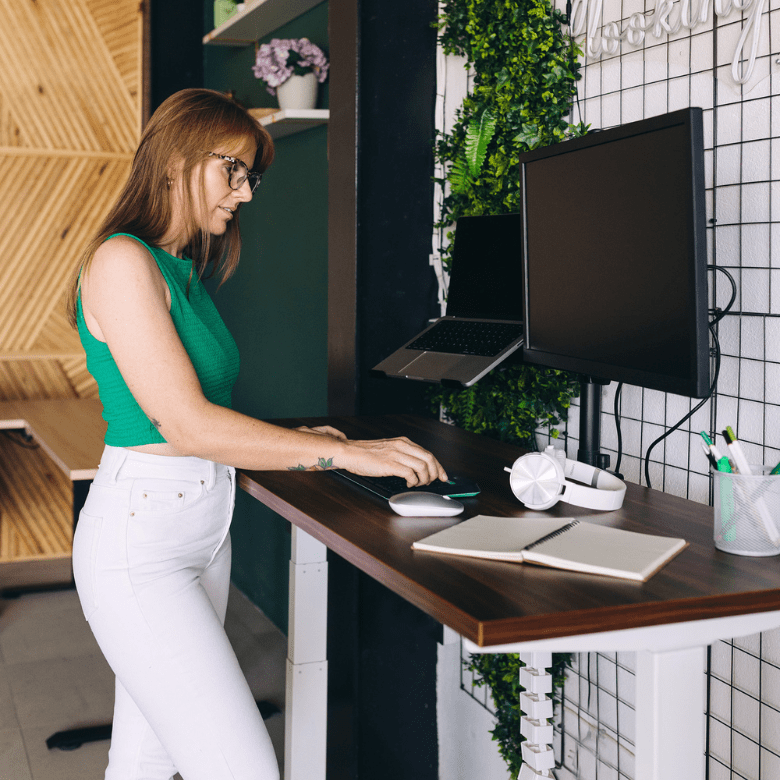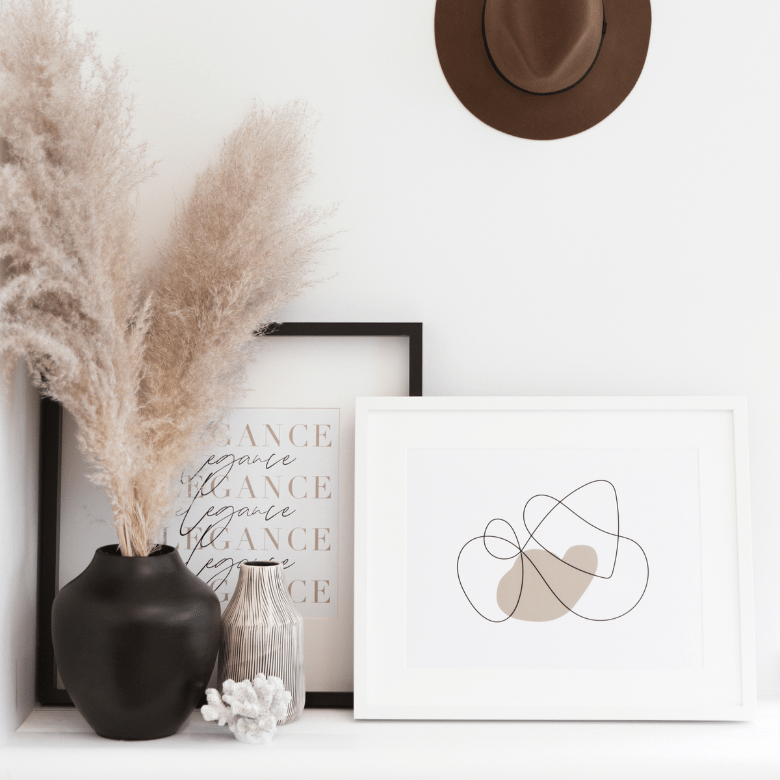Furniture Flipping Guide: How to Flip Furniture for Profit
Discovering a clever way to make extra money can be both fulfilling and profitable. Furniture flipping offers just that opportunity—transforming neglected pieces of furniture into desirable home decor. Whether you’re a seasoned craftsman or a creative novice, there’s a spectrum of potential in this venture. Not only does flipping furniture enable you to add a personal touch to each project, but it can also be a lucrative side hustle.
If you’re thinking about tapping into the world of furniture flipping, understanding the basics is key to your success. Getting started may involve hunting for undervalued items at thrift stores, garage sales, or even by the curbside. With a bit of elbow grease and creativity, those overlooked pieces can become someone’s treasured find. The process typically includes cleaning, repairing, and perhaps even completely redesigning furniture to give it a new lease on life.
Furniture flipping doesn’t just fatten your wallet; it’s a step toward sustainability. By refurbishing and reselling, you help reduce waste and promote a circular economy. Ready to dive into this eco-friendly and financially rewarding pastime? It’s all about harnessing your creativity, learning the ins and outs, and discovering the joy of giving old furniture a new story.
Understanding Furniture Flipping
Furniture flipping transforms an old piece of furniture into a more valuable item, offering you a potentially profitable side hustle. This section will walk you through the essentials of starting your furniture flipping journey, providing specific insights into defining what furniture flipping is and the benefits it can bring.
Defining Furniture Flipping
Furniture flipping is the process where you take an old piece of furniture, often one that is worn or outdated, and refurbish or revamp it to sell for a profit. The aim is to add value through creativity and hard work. You may source furniture from thrift stores, yard sales, or online marketplaces, looking specifically for items that possess the potential for a transformation.
- Where to find furniture: Look for old pieces at thrift stores, garage sales, or online platforms.
- Selecting the right pieces: Aim for furniture made of solid wood as these are more durable and often more appealing after being flipped.
Benefits of Flipping Furniture
Furniture flipping as a side hustle can be quite profitable. Beyond the potential financial rewards, flipping furniture allows you to exercise your creativity, learn new skills, and it has the added benefit of being an environmentally friendly practice by repurposing old items.
- Financial Benefits: Earn extra income by making money flipping furniture, which can range from a small supplement to a significant profit margin, depending on the piece and the work you put into it.
- Flexibility: This side hustle offers the freedom to work on your own terms and create your own schedule.
Whether you’re looking for financial gain, a creative outlet, or both, furniture flipping offers an accessible opportunity to achieve your goals. Remember to prioritize safety and be mindful of the time and effort required to turn this hobby into a profitable venture.
Getting Started
As previously mentioned, furniture flipping can be a rewarding and creative way to generate extra income. Remember, start-up costs can be minimal if you select the right tools and projects for your skill level.
Furniture Flipping for Beginners
When you begin your journey in furniture flipping, the first thing to identify is what type of furniture you want to work with. Your choice will influence both the tools you need and the techniques you’ll employ. Opt for pieces that are manageable and in demand, like small tables or chairs which can be easier to work with and quicker to sell.
As a beginner, you should also be wary of picking up furniture that has been exposed to elements like rain which can cause warping or rust. Instead, choose solid pieces with good bones that require cosmetic rather than structural restoration, as suggested by Honestly Modern.
Basic Tools Required
The following tools are essential for a furniture flipper’s starter kit:
- Hammer: For any loose nails or parts that need securing.
- Pliers: Versatile for pulling nails or opening paint cans.
- Paintbrushes: Invest in a range of sizes for different finish options.
- Sanding Sponges: Ideal for smoothing surfaces in preparation for paint or stain.
Be sure to visit your local hardware store to acquire these basic tools. Remember, investing in quality tools can save you money in the long run as they tend to last longer and perform better. Moreover, paintbrushes and sanding sponges are crucial for achieving a professional finish. Your initial investment in the basic tools may vary, but keeping expenditures low is possible by being resourceful and purchasing only what is necessary for your first project.
Finding Furniture to Flip
Furniture flipping can be both lucrative and fulfilling. To get started, identifying where to source your pieces is crucial, and assessing their potential is even more important.
Sourcing Furniture
There are numerous channels to find furniture to flip. Start with local yard sales and garage sales, where you can haggle for a better deal on items people are eager to discard. Next, browse platforms like Craigslist, Facebook Marketplace, and OfferUp for listings—keep an eye out for free furniture sections. Don’t overlook the value found in thrift stores and flea markets, where hidden gems are often sitting unnoticed. Lastly, estate sales are fantastic for discovering high-quality pieces at lower prices.
- Online Platforms:
- Craigslist
- Facebook Marketplace
- OfferUp
- Physical Locations:
- Yard sales
- Garage sales
- Thrift stores
- Flea markets
- Estate sales
Inspecting Potential Finds
Once you’ve pinpointed a furniture piece, it’s time to inspect. Look for solid wood pieces—they hold up well to refurbishment. Avoid anything with severe water damage or pest infestations. For upholstery items, ensure there is no mold or odors. Quality check smaller pieces like end tables and coffee tables for sturdiness. Always consider the cost and effort of repair against the potential selling price.
- Inspection Checklist:
- Solid wood construction
- Minimal water damage
- No pest damage
- Upholstery free of mold and odors
- Stability for tables
Prepping Furniture for Flipping
Before diving into the world of furniture flipping, it’s crucial to understand the importance of proper preparation. Cleaning and repairing are foundational steps that ensure your furniture not only looks appealing but also has enhanced durability for its future owner.
Cleaning Techniques
When it comes to cleaning, your initial step should involve removing dust and debris using a soft brush or cloth. For more thorough cleaning, especially on real wood, consider a wood cleaner to carefully lift dirt without damaging the surface. Avoid harsh chemicals that can strip the wood of its natural oils. For upholstered items, an upholstery cleaner can refresh fabric without the high costs of professional services.
Repair and Sanding Basics
Repairs can range from tightening loose screws to filling in dents and scrapes. It’s often necessary to replace new hardware such as handles or knobs, which can instantly update the piece’s appearance. Once repairs are made, sanding is the next step, preparing the surface for painting or staining. Begin with a coarser sandpaper and progress to a finer grit for a smooth finish. Use power tools like sanders judiciously to save time and effort, but be careful not to damage the wood by over-sanding.
The Flipping Process
The flipping process in furniture restoration is a journey of transformation, involving hands-on work with tools and materials to renew and enhance the original charm of each piece.
Painting and Refinishing
Painting your furniture is one of the most impactful ways to give it a new lease on life. Select a favorite paint or chalk paint for an elegant matte finish. Use a paint sprayer for an evenly coated and professional look. Always start with a thorough primer application to ensure paint adherence and durability. For surfaces where the natural grain should shine through, staining followed by a polyurethane coat can offer both beauty and protection.
- Primer: Essential for preparing the surface.
- Apply in even coats and let dry completely.
- Paint/Chalk Paint: Brushes versus sprayers.
- Use brushes for detail work and sprayers for even finishes.
- Polyurethane: Protective coat for stained wood.
- Apply in thin layers, sanding lightly between applications.
Upcycling Strategies
Upcycling breathes creative new life into your furniture, transforming the tired and old into something fresh and desirable. Here, the goal is not just to refresh but to reimagine. Consider using solid wood pieces, which lend themselves well to modifications due to their durability. Experiment with different creative ways to add both function and aesthetic appeal to a piece. When refinishing, balance retaining the item’s character while introducing fresh features that make it unique.
- Creative Techniques: Think beyond paint.
- Incorporate new hardware, add upholstery or mix materials.
- Solid Wood: The foundation for upcycling.
- Choose solid wood for ease of alteration and long-lasting results.
Staging and Photography
With furniture flipping, the way you present and capture your pieces can make an enormous difference in catching the eye of potential buyers. Your staging and photography are your best tools to stand out in a crowded online marketplace.
Creating an Attractive Presentation
First impressions matter, especially when you’re aiming to sell your flipped furniture quickly and for a good price. It’s important to create an attractive presentation that appeals to your list of potential buyers. Begin with staging your furniture in a way that showcases its best features. Use props sparingly; the focus should be on the furniture piece itself. Here’s a simple setup you might use:
- Background: Choose a neutral, uncluttered backdrop.
- Accessories: Minimal and complementary to the piece.
- Lighting: Ensure the area is well-lit with natural light if possible.
An eye-catching display not only highlights the quality of your work but also inspires buyers to imagine the piece in their own spaces.
Photographing Your Furniture
Once your furniture is staged, it’s time to take high-quality photos. Good photography is key to making your piece look its best on online marketplaces. Follow these essentials:
- Camera settings: Use a high-resolution setting.
- Angles: Shoot from multiple angles to showcase the entirety of the piece.
- Editing: Enhance photos for brightness and clarity but avoid altering the furniture’s true appearance.
Your photos are a reflection of your brand; they tell a story of quality and attention to detail. The right images can draw in shoppers and ultimately help you sell your pieces with confidence.
Selling and Marketing
When flipping furniture, your ability to sell and market effectively is essential for success. Strategically listing items and pricing them correctly are key components in realizing substantial profit margins.
Listing on Marketplaces
Finding the best place to sell furniture can be the difference between a quick sale and a lingering product. Utilize online marketplaces like eBay, Etsy, and Facebook Marketplace to reach a wide audience. These platforms are a great way to showcase your refurbished pieces to potential buyers. When listing:
- Use High-Quality Images: Clear, well-lit photos from multiple angles.
- Write Detailed Descriptions: Mention the unique features, dimensions, and any history/story behind the furniture.
- Optimize for Search: Include relevant keywords so your listings show up in searches.
Setting the Right Price
Setting the right price is crucial for reselling. Your asking price should be competitive yet leave room for profit. Consider the following:
- Research Market Value: Look at similar pieces to gauge what buyers are willing to pay.
- Factor in Costs: Include materials, time spent, and selling fees to calculate your price points.
- Adjust as Needed: Be ready to negotiate and adjust prices to stay competitive while keeping an eye on your profit margins.
Using social media to market your pieces can also increase visibility and attract buyers. High-quality images and engaging posts on platforms like Instagram can drive traffic to your listings. A good sale starts with great marketing.
Logistics of Furniture Flipping
Managing the practical aspects of furniture flipping can make or break your hustle. Focus on reliable transportation solutions and safe storage methods to streamline your operations and safeguard your investments.
Transportation Solutions
Transporting furniture is a critical step in the flipping process. For large or delicate pieces like antique furniture, you’ll need a vehicle spacious enough to accommodate their size and protect them from damage during transit. Consider renting a van or a truck with ample space, and invest in protective materials such as bubble wrap and moving blankets.
- Local Pickups: Use a personal vehicle equipped with straps and padding.
- Long-Distance Pickups: Contract reputable shipping services that specialize in furniture handling.
- Safety Considerations: Secure furniture firmly to prevent shifting and potential harm to both the piece and your vehicle.
Safe Storage Methods
Your storage setup is equally important, especially when handling multiple pieces or waiting to complete a sale. Proper storage not only preserves the quality of your furniture but also ensures a safe environment for working on your projects.
- Climate Control: Maintain a consistent temperature and humidity level to protect sensitive materials like wood and fabric.
- Organizational Systems: Use storage chests or shelving units to keep parts and tools accessible yet out of the way.
- Space Management: Allow sufficient room to move around pieces comfortably, reducing the risk of accidents.
Scaling Your Furniture Flipping Business
Elevating your furniture flipping endeavors from a hobby to a profitable small business means committing to it full-time and expanding your market reach.
Going Full-Time
Transitioning to full-time furniture flipping isn’t just about dedicating more time; it’s a shift towards a professional mindset. To sustain a full-time income, you’ll need to be strategic about the type of furniture you select and the profit margins you aim for. Before taking the leap, ensure you’re making enough extra cash to cover your living expenses. Your workshop should be optimized to handle increased volume, meaning tools are easily accessible and materials are well-stocked.
Expanding Your Reach
As a small business owner, extending your market presence is key. Investing in online marketing and utilizing social media can help showcase your unique pieces to a broader audience. Consider setting up a professional website or an online store to attract more customers. Partnering with local shops or attending flea markets can also boost visibility. Keep track of what sells best so you can focus your efforts on projects that have the best turnaround in terms of time and money. The more you’re seen, the more you’ll sell.
Troubleshooting Common Issues
While flipping furniture, even the most seasoned veterans encounter hiccups. Knowing how to navigate through common issues such as making mistakes, managing returns, and handling complaints is crucial for maintaining a reputation for quality and customer satisfaction.
Avoiding Common Mistakes
When you begin flipping furniture, it’s important to focus on finding inexpensive pieces that you can hone your skills on. This minimizes the risk as you learn. Always opt for solid wood and metal furniture, as these materials are not only easier to work with but also tend to add more value when restored.
- Repairs: Before you start anywhere else, check for loose joints or damage and address these issues first. Repairs are essential; a well-put-together piece is more valuable than a cosmetically perfect but fragile one.
- Tips: Always sand down your furniture to create a clean slate for painting or staining, and don’t forget to seal your paint job to protect against wear and tear.
In dealing with paint, be mindful that unsealed paint can remain tacky, especially in humid environments, trapping dust and fingerprints. Using a high-quality flat paint is recommended for concealing imperfections.
Handling Returns and Complaints
As you sell your flipped furniture, prepare to address any returns or complaints professionally. Here’s a straightforward approach:
- Define your return policy clearly from the beginning. Transparency about the conditions under which returns are accepted will prevent misunderstanding.
- When faced with complaints, listen carefully to your customers and provide prompt, courteous responses. Excellent customer service can turn a potentially negative situation into an opportunity for repeat business.
- Frequently Asked Questions: Keep a list of FAQs to share with buyers, covering care instructions, materials used, and your return policy.
- Challenges: Always be ready to suggest solutions for any problems customers might encounter with the piece, from repair advice to touch-up kits.
Sustainability and Ethical Considerations
In the world of furniture flipping, your choices have meaningful impacts on both the planet and society. Choose methods that honor the principles of sustainability and consider the ethical impact of your actions.
Reducing Environmental Impact
When you upcycle furniture, you’re contributing to a reduction in environmental damage. Every piece of solid wood furniture given a second life means one less item heading to a landfill on trash day. By choosing to refurbish rather than discard, you prevent the depletion of resources used for creating new items. Vintage and antique pieces, besides being aesthetically pleasing, hold the promise of quality and longevity, distinctly countering the disposable culture associated with mass-produced particle board furniture.
Ethical Sourcing and Selling
Your approach to sourcing furniture is as crucial as the act of flipping itself. Ethical sourcing ensures that the furniture you select is not just environmentally sound but socially responsible. Seek out pieces from sources that do not exploit labor or engage in unfair practices. Likewise, in selling your repurposed creations, transparency with potential buyers about the origin and materials of your restored furniture fortifies trust and promotes ethical consumerism. By doing this, furniture flippers like yourself can pioneer a practice that’s not merely profit-driven but anchored in making a positive societal impact.







